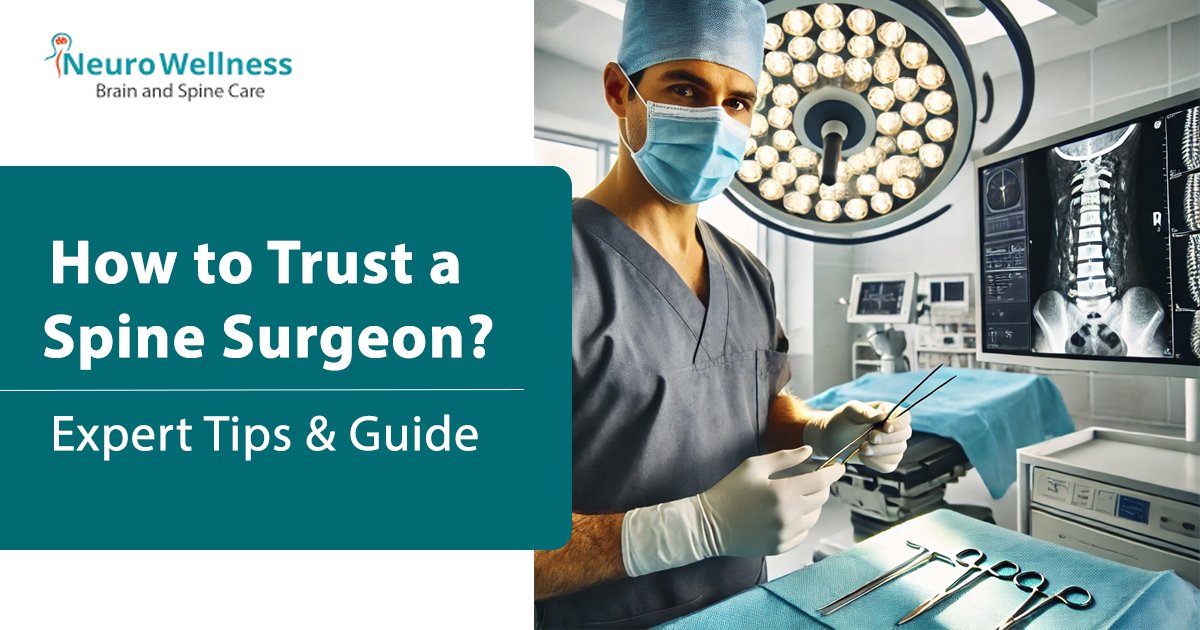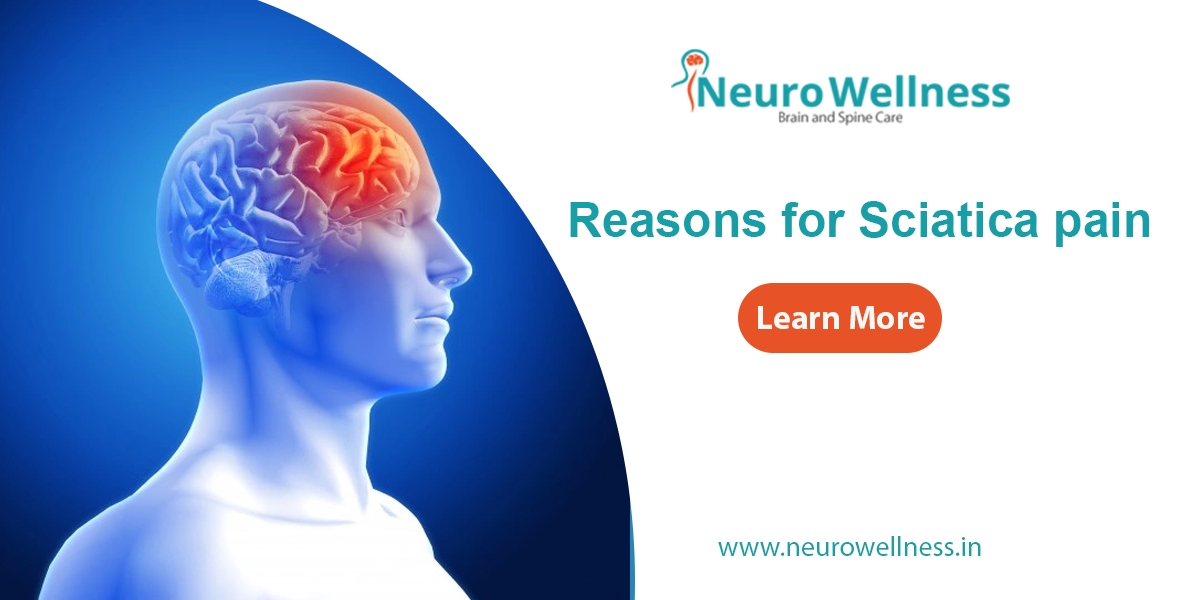5 Signs of Lumbar Disc Prolapse: Symptoms, Causes, and Treatment Options
Lumbar disc prolapse — commonly known as a slipped disc — can cause back pain, leg numbness, and mobility issues.
At Neurowellness Bangalore, our spine specialists manage hundreds of disc-related cases every year using advanced endoscopic and minimally invasive methods.
“Most disc prolapse cases recover without open surgery. The key is early diagnosis and disciplined posture correction.”
— Dr. Ganesh Veerabhadraiah, Senior Neurosurgeon, Neurowellness Bangalore
Lumbar Disc Prolapse, also called a herniated or slipped disc, is a common spinal condition, particularly in people over 50 years of age. This condition is a type of degenerative disc disorder where the gel-like material within the disc (called the nucleus pulposus) pushes out through a tear in the surrounding annulus fibrosus. This protrusion can compress nearby nerve roots, leading to neurological symptoms.
Symptoms of Lumbar Disc Prolapse
1. Lower Back Pain
Lower back pain is often one of the first symptoms, ranging from mild to moderate in the early stages. In advanced stages, pain may radiate to the leg, depending on the severity and location of the prolapse.
2. Sciatica (Leg Pain on One Side)

Classically sciatica or radical pain is on one side. It may extend from the hip down up to the knee or ankle, especially on the lateral aspect of the leg or foot. This is due to nerve root pinching. L4L5 Disc prolapse or PIVD(prolapsed intervertebral disc) is the most common disc prolapse and causes problems. It can happen on other levels also. In severe cases, there may be severe leg pain or back pain which aggravates on cough or sneezing. You may be unable to sit or move.
3. Nerve Pain (Neurogenic Pain)

Patients may experience numbness, tingling, or burning sensations in the leg, thigh, or foot. In severe cases, there may be a “cotton wool” sensation while walking, indicating nerve damage.
4. Muscle Weakness and Gait Issues

If the nerve is involved chronically or nerve root compression is severe you may get weakness in the toes/foot or leg. There may be Difficulty in lifting the foot or wearing a slipper or slipper falling away from the foot while walking without getting noticed.
5. Bowel or Bladder Incontinence (Cauda Equina Syndrome)

It is a severe or extreme condition when disc prolapse or disc extrusion happens. There may be Loss of bowel, bladder, or sexual sensation when caudal equina nerve roots are involved or compressed.
In elderly patients disc prolapse may be associated with spinal stenosis or slip vertebra or listhesis.
6. Associated Conditions in Elderly Patients
In older individuals, lumbar disc prolapse is often accompanied by spinal stenosis, spondylolisthesis (slipped vertebra), or degenerative changes in the spine.
Causes of Lumbar Disc Prolapse
• Age-related degeneration: Natural wear and tear weaken the spinal discs over time.
• Trauma or injury: Sudden impacts or lifting heavy objects incorrectly can cause a disc to herniate.
• Repetitive strain: Jobs or activities requiring prolonged sitting, bending, or twisting can contribute to disc damage.
• Obesity: Extra body weight puts additional pressure on the spine.
• Genetics: A family history of disc problems increases the risk.
Here’s an updated version of your blog with added trending keywords, SEO-friendly structure, and an FAQ section:
Lumbar Disc Prolapse: Symptoms, Causes, and Treatment Options
Lumbar Disc Prolapse, also called a herniated or slipped disc, is a common spinal condition, particularly in people over 50 years of age. This condition is a type of degenerative disc disorder where the gel-like material within the disc (called the nucleus pulposus) pushes out through a tear in the surrounding annulus fibrosus. This protrusion can compress nearby nerve roots, leading to neurological symptoms.
Symptoms of Lumbar Disc Prolapse
1. Lower Back Pain
Lower back pain is often one of the first symptoms, ranging from mild to moderate in the early stages. In advanced stages, pain may radiate to the leg, depending on the severity and location of the prolapse.
2. Sciatica (Leg Pain on One Side)
Sciatica is characterized by pain radiating from the hip down to the leg, typically on one side. This occurs due to nerve root compression, commonly at the L4-L5 level, which is the most frequent site of disc prolapse.
3. Nerve Pain (Neurogenic Pain)
Patients may experience numbness, tingling, or burning sensations in the leg, thigh, or foot. In severe cases, there may be a “cotton wool” sensation while walking, indicating nerve damage.
4. Muscle Weakness and Gait Issues
Chronic nerve compression can lead to muscle weakness, causing difficulty lifting the foot (foot drop) or even noticing when slippers fall off while walking.
5. Bowel or Bladder Incontinence (Cauda Equina Syndrome)
A rare but severe condition, cauda equina syndrome occurs when the prolapsed disc compresses the cauda equina nerves. This leads to loss of bowel or bladder control and diminished sexual sensation.
6. Associated Conditions in Elderly Patients
In older individuals, lumbar disc prolapse is often accompanied by spinal stenosis, spondylolisthesis (slipped vertebra), or degenerative changes in the spine.
Causes of Lumbar Disc Prolapse
ㆍ Age-related degeneration: Natural wear and tear weaken the spinal discs over time.
ㆍTrauma or injury: Sudden impacts or lifting heavy objects incorrectly can cause a disc to herniate.
ㆍRepetitive strain: Jobs or activities requiring prolonged sitting, bending, or twisting can contribute to disc damage.
ㆍObesity: Extra body weight puts additional pressure on the spine.
ㆍGenetics: A family history of disc problems increases the risk.
Diagnosis and Treatment
Diagnosis:
ㆍPhysical Examination: Evaluates muscle strength, reflexes, and range of motion.
ㆍImaging Tests: MRI, CT scan, or X-rays help confirm the location and severity of the disc prolapse.
Treatment Options:
1. Non-Surgical Treatments
ㆍPhysical Therapy: Strengthening exercises to support the spine.
ㆍMedications: Pain relievers, anti-inflammatories, or nerve pain medications.
ㆍEpidural Injections: Corticosteroid injections to reduce inflammation.
2. Surgical Treatments
ㆍMicrodiscectomy: Minimally invasive removal of the prolapsed portion of the disc.
ㆍLaminectomy: Removal of a portion of the vertebra to relieve pressure.
Why Choose Neuro Wellness for Lumbar Disc Prolapse Treatment?
At Neuro Wellness, Dr. Ganesh Veerabhadraiah, a renowned back pain specialist in Bangalore, offers personalized and advanced treatment plans for lumbar disc prolapse. Our state-of-the-art facilities and experienced team ensure comprehensive care tailored to your needs.
FAQs
1. Can a lumbar disc prolapse heal on its own?
Yes, mild cases often recover within 6–8 weeks with rest and exercise.
2. When is surgery required?
When pain, weakness, or numbness persist beyond 8 weeks despite therapy.
3. Is physiotherapy safe for disc prolapse?
Absolutely — under expert guidance, it strengthens core muscles and relieves pressure on nerves.
4. How does AI assist spine treatment?
AI helps analyze MRI images and plan precise surgical trajectories for faster recovery.

About Author
Dr. Ganesh Veerabhadraiah
Dr. Ganesh Veerabhadraiah, leading neurosurgeon and neurologist in Bangalore, has over 20 years of expertise in managing back pain, migraines, headaches, neuro disorders, and spine problems. His clinical excellence and patient-first approach make him one of the most trusted neuro doctors in Bangalore.
At Neurowellness Brain & Spine Clinic in Jayanagar and Kavery Hospital Electronic City, Dr. Ganesh provides comprehensive treatments ranging from minimally invasive spine surgery to advanced neurological care. As a respected back pain specialist and migraine doctor, he continues to deliver reliable outcomes for patients.







